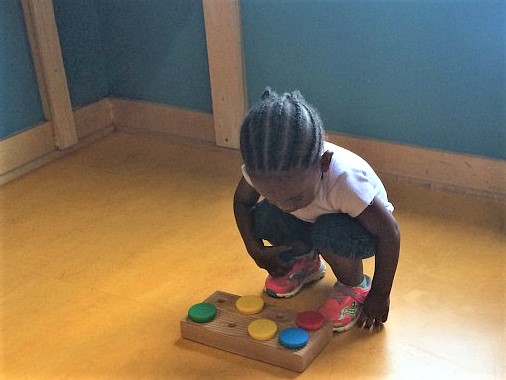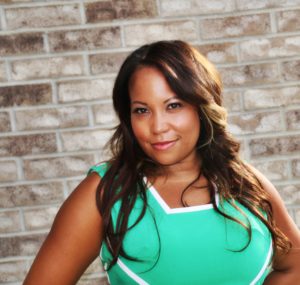
The first year of your child’s life is filled with exhilarating and monumental developmental milestones. Babies adapt to their environment at a rapid pace, often before parents are ready. During these beginning stages, it can feel challenging and daunting for a parent to navigate through raising a toddler while also being mindful of their child’s unique learning readiness, needs, and styles. The following tips can help parents and caregivers to manage the task of developmental support and to be intentional in efforts to build and nurture toddler brain growth.
From 12 to 18 months, babies are developing language skills, thinking skills, learning how to move, and developing socially and emotionally (1).
As caregivers, it is important to know best practices for supporting the brain development of our children.
During my studies in early childhood development, I learned some tricks of the trade to add to my toolbox when I became a parent. Understanding the educational expectations of preschool aged children, I created simple ways to incorporate oral language development and early mathematical concepts during normal interactions with my baby in effort to lay the foundation for academic success.
Oral Language Development

Between 13 and 20 months, a toddler’s brain processes speech more quickly, which enables them to better understand what is being said, receptive language. At this age, children understand more of what is being said to them than they can say themselves. Their expressive language, however, is not fully developed until about 3-4 years of age (1).
Oral Language development is a precursor to reading and comprehension.
Here are three ways to support oral language development with your child.
-
Read Books Daily
Reading books is the single most important tool for developing oral language. Children naturally love to learn, and books are a vessel for transporting them into different worlds and experiences. Touch and feel books are great for exposure to a variety of sensorial material. I suggest books about animals, colors, counting, and shapes to get them to begin to identify these artifacts and make connections in their natural environment.
-
Converse with your Child
Having conversations with your baby may seem odd at first, but it really helps them build their receptive language and learn about their environment. Always talk in complete sentences in effort to model fluent speaking, thus translating into how your child will use their expressive language. Talk about what you are doing when completing a task. “Mommy is washing the table; can you wash the table?” Name everything you see when engaging with the child. If you are taking a walk, point out the trees, talk about how it feels outside, or name the color of the cars that you see. The goal here is to have meaningful conversations with your little ones that help them make oral connections to visual representations of their environment.
-
Repeat, Repeat, REPEAT
I know it is sometimes painful to hear “the wheels on the bus” yet another time, but repetition is how babies acquire and remember information. This strategy can be used in every aspect of the day. Begin with a consistent routine and schedule. Waking, eating, and sleeping at the same time every day creates structure. A structured environment helps to manage expectations and ease anxiety with transitions. Repeating activities and tasks gives toddlers an opportunity to practice skills and commit them to memory.
Early Mathematical Concepts

Each day offers us countless opportunities to help children deepen their understanding of math concepts. The more we talk math, the better chance infants and toddlers will build a positive attitude toward math learning and knowledge in general (2).
Laying a foundation for early mathematical concepts in toddlers is much simpler than it may seem. We use basic math concepts in our language as we complete daily tasks in our routine.
We sort our laundry by color, use measurement skills to cook, and use ordinal terms such as “first” and “next” to guide children with directions and expectations.
The same concepts can be applied when teaching your toddler. The following research has been extracted from an article about Math Talk from the National Association of Education of Young Children (NAEYC). I used these activities with my 12 month old and she was able to recognize numbers through 10, rote count to 20, identify primary and secondary colors, and had a basic understanding of spatial relationships prior to her 2nd birthday!
-
Number and Operations
Number and operations is understanding the concept of number, quantity, order, ways of representing numbers, one-to-one correspondence (that one object corresponds to one number), and counting. Here are some examples of how you can incorporate math talk about numbers and operations.
- “You have two eyes, and so does your bear. Let’s count: 1, 2.”
- “I have more crackers than you do. See, I have 1, 2, 3, and you have 1, 2. I’m going to eat one of mine. Now I have the same as you!”
- “That’s the third time I’ve heard you say mama. You’ve said mama three times!”
-
Shapes and Spatial Relationships (geometry)
Shapes and spatial relationships can be defined as recognizing and naming shapes, understanding the physical relationship between yourself and other objects, and the relationships between objects. Try introducing these math talk ideas into your conversations. When you are speaking, be sure to emphasize the “math” word.
- “Look, Jason went under the climber and Aliyah is on top!”
- “You’re sitting next to your brother.”
- “Some of the crackers we have today are square, and some are round.”
-
Measurement
Measurement refers to size, weight, quantity, volume, and time. Here are a few examples of how to use math talk with measurement.
- “Moving that chair is hard. It’s heavy.”
- “Your nap lasted a long time today!”
- “Let’s count how many steps it takes to reach the mailbox.”
-
Patterns, Relationships, and Change
Patterns involve seeing the relationships that make up a pattern; creating repetitions of objects, events, colors, lines, textures, and sounds; understanding that things change over time, and that change can be described with math words. These are the basic building blocks of algebra!
- “Daddy has stripes on his shirt—white, blue, white, blue, white, blue.”
- “Let’s clap to the beat of this song.”
- “I put the blocks in the bucket; you dump them out. I put the blocks back in the bucket; you dump them out!”
- “Our plant looks taller I think it grew overnight.”
-
Collecting and Organizing Information
Collecting and organizing information requires gathering, sorting, classifying, and analyzing information (data) to help make sense of what is happening in the environment.
- “Let’s put the big lid on the big bowl and the small lid on the small bowl”
- “You always smile when Mommy sings to you!”
- “Let’s put the dolls in the basket and the balls in the box.”
Being intentional and purposeful about how you use verbal communication to develop oral language and early mathematical concepts will create learning experiences for your child that will translate to independent application of the skills. Simply imbed into your daily routine, and toddlers will begin to receive a foundation for literacy, number sense, and even algebraic concepts before they can speak.
You are your child’s first teacher.
You Raise. We Rise.







What do you think?